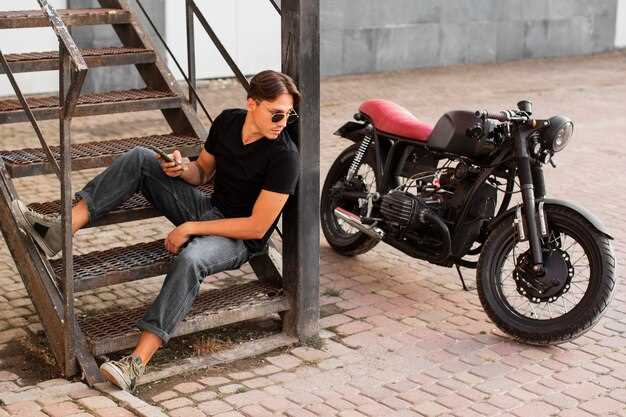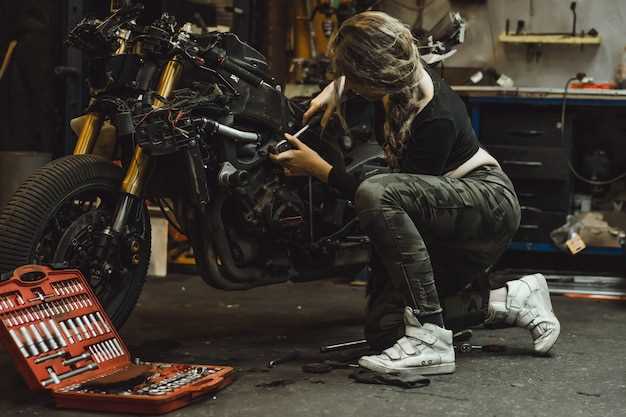
In the world of motorcycles, the naked bike genre has gained substantial popularity among riders who appreciate a blend of performance and minimalist aesthetics. Transforming a sport bike into a naked bike not only enhances its visual appeal but also offers a unique riding experience. This guide aims to provide enthusiasts with essential insights and steps to successfully undertake this transformation.
First, it is crucial to understand the fundamental differences between sport bikes and naked bikes. Sport bikes are typically designed for high-speed performance and agility, featuring aerodynamic fairings and aggressive seating positions. In contrast, naked bikes prioritize a more upright riding posture and a stripped-down look, emphasizing versatility and comfort. By recognizing these distinctions, riders can make informed decisions regarding modifications that align with their vision.
The transformation process involves several key modifications, including the removal of bodywork, adjustment of handlebars, and potential upgrades to suspension and braking systems. Each of these steps requires careful planning and execution to ensure that the motorcycle maintains its performance capabilities while embracing the naked bike aesthetic. By following this guide, riders can successfully navigate the journey of customizing their sport bike into a stylish and functional naked version that stands out on the road.
Choosing the Right Conversion Kit for Your Sport Bike
Transitioning a sport bike into a naked bike requires careful consideration of the appropriate conversion kit. The right kit will not only enhance your bike’s aesthetics but also improve its overall performance and comfort. Here are essential factors to keep in mind when selecting a conversion kit.
1. Compatibility with Your Model: Ensure that the kit is specifically designed for your bike model. Each sport bike has unique specifications, so a kit that fits one model may not necessarily fit another. Always check compatibility details provided by the manufacturer.
2. Quality of Materials: The materials used in the conversion kit play a crucial role in durability and performance. Look for kits made from high-quality aluminum or fiberglass, as these materials offer strength while keeping weight low.
3. Includes Necessary Components: A complete conversion kit should include all components needed for the transformation. This typically comprises handlebars, a headlight, instrument cluster brackets, and necessary wiring. Ensure the kit you choose covers all these essentials to avoid sourcing parts separately.
4. Installation Ease: Consider how easy the kit will be to install. Some kits are designed for DIY enthusiasts and come with comprehensive instructions, while others may require professional installation. Evaluate your mechanical skill level when deciding.
5. Aesthetic Appeal: Naked bikes have a distinct look. A good conversion kit should enhance the visual character of your bike. Research different design options and color schemes that complement your sport bike’s style to achieve the desired appearance.
6. Price versus Value: While it may be tempting to opt for the cheapest option, assess the value offered by different kits. Higher-priced kits may provide better materials, components, and customer support. Compare various options to ensure you are making a wise investment.
7. Customer Reviews and Feedback: Investigate user experiences by reading reviews and feedback on conversion kits. Real-world insights can provide valuable information regarding reliability, ease of installation, and performance post-conversion.
Making an informed decision when choosing a conversion kit is crucial to achieving the desired outcome for your naked bike project. By considering compatibility, quality, included components, ease of installation, aesthetics, value, and user reviews, you’ll position yourself to select the best conversion kit for your sport bike.
Step-by-Step Process to Remove Fairings and Adjust Ergonomics

Transforming your sport bike into a naked bike requires careful removal of the fairings and adjustments to the ergonomics for optimal comfort and handling. Follow these steps to ensure a successful transformation.
1. Gather Necessary Tools
Before starting, collect all the required tools. You will need a socket set, screwdriver set, pliers, and possibly a panel removal tool. Having everything ready will make the process smoother.
2. Prepare the Workspace
Park the bike on a stable surface and ensure it is secure. If possible, use a motorcycle lift or stand to provide better access to the bike’s components. Ensure that you have adequate lighting and space to work.
3. Remove the Seat
Start by removing the seat, as it often obscures access to other fairing components. Locate and unscrew the bolts securing the seat, then carefully lift it off and set it aside.
4. Detach the Side Fairings
Proceed to the side fairings. Identify the screws and clips holding them in place. Use a screwdriver to remove the screws and carefully pry away the clips using a panel removal tool. Gently pull the fairings away from the bike frame, taking care not to damage any attached wiring or components.
5. Remove the Front Fairing
Next, focus on the front fairing. This usually requires more attention due to the headlight and turn signal connections. Disconnect any wiring harnesses before removing screws and clips. Carefully lift the front fairing off the bike.
6. Set Aside Fairings Safely
Once all fairings are removed, store them in a safe place to avoid damage. This also makes it easier to reinstall them if needed in the future.
7. Assess Ergonomics
With fairings removed, assess the bike’s ergonomics. Check handlebar height and position, footpeg placement, and overall riding stance. You may need to adjust these components to achieve a more upright and comfortable riding position.
8. Adjust Handlebars
If necessary, swap out the handlebars for a higher or wider alternative. Loosen the controls and grips to reposition them accordingly. Ensure that controls are still easily accessible and comfortable for your grip.
9. Modify Footpegs
Consider adjusting footpeg height or angle to enhance comfort. Some bikes allow for footpeg adjustments, while others may require aftermarket solutions.
10. Test the Setup
Once all adjustments are made, take the bike for a short test ride. Evaluate the new riding position and make any necessary tweaks for final comfort and control.
Following these steps will guide you through the process of transforming your sport bike into a naked bike, providing both aesthetic appeal and improved ergonomics for a better riding experience.
Upgrading Components for Improved Performance and Style

Transforming a sport bike into a naked bike involves not just a visual refresh but also enhancing performance through upgraded components. Below are essential components to consider for both aesthetic and functional improvements.
1. Handlebars: Replacing the stock handlebars with wider and higher options can significantly improve ergonomics and comfort. Look for tapered aluminum handlebars that reduce vibration and increase durability.
2. Seat: A custom seat can enhance comfort for longer rides and add a unique style. Consider options with better cushioning and textured materials that provide better grip and aesthetic appeal.
3. Suspension: Upgrading your suspension system is crucial for handling and ride quality. Consider adjustable shock absorbers and fork upgrades that cater to your weight and riding style, improving cornering stability and overall control.
4. Exhaust System: Changing the exhaust to a lightweight aftermarket system can reduce weight and enhance sound. Look for options that provide a performance boost while complementing the naked bike aesthetic.
5. Tires: Swap out the sport tires for a versatile set that balances grip and durability. Consider wider tires that provide a more aggressive stance and improved traction on various surfaces.
6. Lighting: Upgrading to LED lights for both headlights and turn signals can modernize the bike’s look while offering better visibility. Choose designs that blend with the bike’s overall style for a cohesive appearance.
7. Mirrors: Aftermarket mirrors can dramatically change the look of your bike. Consider bar-end mirrors or minimalist designs that enhance the naked style while providing adequate rear visibility.
8. Rearsets: Adjustable rearsets allow for better positioning of your feet and enhance the riding experience. Choose a design that matches your aesthetic preferences while providing functionality for spirited riding.
Each upgrade not only contributes to the overall performance but also distinctively defines the character of your naked bike. Prioritizing quality and compatibility with your existing setup will yield the best results.